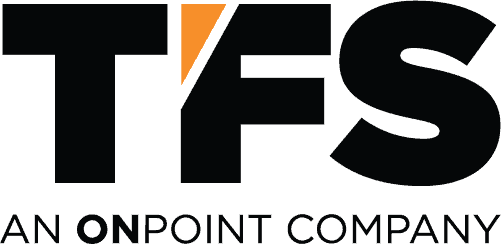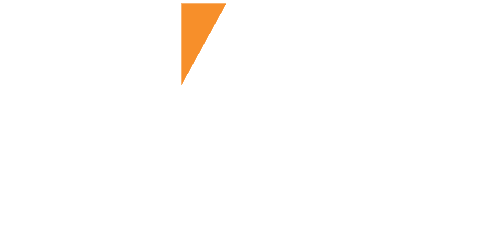We spoke with three TFS executives who were at MODEX to get their takes on the show. Here are the six top takeaways you need to know to get you beyond 2022. Everyone seemed to agree that automation had stronger representation than ever before, but even the more traditional technologies had morphed in new and interesting ways. In short, there’s a lot of exciting change going on.
We spoke with three TFS executives who were at MODEX to get their takes on the show. They are the six top takeaways you need to know to get you beyond 2022:
1. The big forklift manufacturers were MIA – What struck Nate Josic, a TFS Regional Vice President, is that so many big names were missing from the forklift lineup. He suspected they might have weighed the benefits of being there versus explaining to customers and prospects why they were facing long lead times, challenging logistical implementation, rising costs, and more.
“It was a different vibe,” Josic said. “There’s typically a spotlight on new technology and advancements in the forklift industry and it was kind of overshadowed by this whole fulfillment setback.”
Takeaway: While lead times are getting shorter than they were at the height of the pandemic, the absence of the big OEMs indicates the problem is far from over. Take that as a signal to take a deep breath and strategically consider your material handling approach. At TFS, we’re big believers that a fleet management partner can provide you with the expertise and options you need, especially in such an uncertain time.
2. Automation is booming – All of our attendees agreed that automation, which has been waiting in the wings, is now a leading player, for a number of reasons, including the labor shortage, supply chain issues, and long lead times on forklifts. Josic feels that the current situation has given engineering teams, which were always interested in automation, more influence with the c-suite.
“Automation is really hot,” Josic said. “It always has been, but in this show, it noticeably dominated the booths and the presentations.”
Anthony Bartoline, a TFS Regional Vice President, added: “The people who were already thinking about it—the clients that were already kind of on the fence, saying ‘Hey, maybe it makes sense. Maybe there’s an ROI’—I think the pandemic just kind of pushed them over the edge and they want to figure this out now.”
Takeaway: There’s no question that the pandemic has advanced automation significantly in the past few years. And that’s exciting! At TFS, we’re huge believers in automation. However, we’d caution you to understand what problems you want to solve, then find solutions that fit. It’s easy to get caught up in robotics because it’s the hot new technology but, considering it’s often a major investment, you need to keep your eye on the prize.
3. The automation market is flooded with new suppliers and start-ups – All of our attendees agreed that there were hundreds of new suppliers, all automating different parts of the process flow, and that most consumers trying to sort through all the new companies probably feel understandably confused and overwhelmed.
In other words, while there are certainly legitimate vendors in the mix, the sheer number of companies makes it harder to sort which is the right fit for the business problem to solve for.
“The show highlights new and upcoming tech and a company may have figured out a way to automate a process, but may not have figured out a way to bring it to market yet, so there’s a delay or gap,” Josic said. “I think that the overall theme for me was that companies shopping for solutions need to know the difference between what they can move on now and what is maybe an innovative piece for the future.”
Bartoline believes it’ll be “the Wild West” until the market sorts itself out, with some start-ups proving themselves and many falling by the wayside. Overall, he thinks the vendor mix bodes well for automation.
“When you see the major OEMs also playing in that space, you know they’re not going to jump into something like that unless they know it’s the future,” Bartoline said. “Every single one of them, whether they’re at that show or not, is more than dabbling in that space now.”
Ryan Boyd, Vice President, Racking and Automation, agrees and believes that potential automation partners need real-world experience, especially because he’s seen bad implementations set back every future automation project. He’s witnessed vendors designing fancy software that looks good in theory, but in the field, the pitfalls are discovered in real-time. These new vendors often “don’t know what they don’t know,” especially when it comes to things like OSHA and safety.
“It doesn’t matter how ‘glamorous’ the tech looks on the showroom floor,” Boyd said. “If the vendor doesn’t have any real-world implementations, they better have some real-world players on their team.”
Takeaway: Since the market’s not calming down anytime soon, look for brand-independent partners with a consultative, big-picture approach to solutions like automation and racking. The best vendors provide one-stop-shop advice—an automation plan that maximizes your ROI, provides vendor selection guidance, supplier and vendor management, and a multi-year roadmap that considers where automation solutions and your business are now and where both will be in a few years.
4. Automation is spurring new takes on warehouse processes: One of the most exciting things about automation is that it’s causing a rethinking of the status quo. Boyd cites one robotics start-up as an interesting example as a company creating an updated zone divert model.
“This automation technology puts operators in zones and these robots are coming to that zone them with the order,” Boyd said. “What’s really cool about that, if it all does work properly, is that it gives you a ton of flexibility when it comes to how you design your storage, which is a big part of the environment. For example, you can change it at any given time and it won’t mess up the entire system because those robots are literally coming to a spot on the floor.”
Boyd also cites the emergence of hybrid options, like a barcoding company that merged with a manufacturing company to create a hybrid solution.
“They’re becoming integrators and also manufacturers—and that’s super interesting to me. I’m curious to see how that shakes out when it’s all said and done because, right now, you’ve really got two distinct segments in the world: manufacturers and integrators,” Boyd said. “I’ll be keeping an eye on the space. I think the good hybrids will stay in place due to relationships and trust. But I think you’ll see a lot of fly-by-night integrators that won’t.”
Takeaway: Companies can and should certainly explore this new flexibility but, as mentioned earlier, it’s important to work with businesses that can provide evidence of successful, real-world implementations. You’ll want to consider partnering with a fleet management company that does vendor due diligence and can help you create and launch tests of new tech. And we always stress that companies shouldn’t forget to build roadmaps, which they can revisit and adjust as these new models provide proof of concept. More importantly, allowing flexibility in your roadmap as supply and demand ebb and flow.
5. Telemetry and safety are still an integral piece of the show – While automation may be providing the big buzz—and rightly so—businesses are still concentrating on the tried-and-true. Josic was impressed by some of the advancements he saw in the safety space.
“One of the things I saw that I thought was impressive was pedestrian safety systems,” Josic said. “The technology used to be very expensive. It’s getting cheaper because there is more investment, but it’s also getting better. I came across one company that initiated a forklift shutdown if there’s an incident, which can be defined as a pedestrian within a certain distance of the forklifts.”
He also cited technologies that take pictures in real-time and do video captures. This not only provides evidence if there’s a forklift shut-down due to an incident, but it also allows operator coaching and compliance.
Takeaway: While perhaps not as “shiny” as robotics and automation, this space also has a lot of start-ups springing up. Be sure to partner with an experienced telemetry partner who can help you vet the technology and can assist by building a holistic plan that improves operator safety.
6. Companies are driven by fear of missing out – As your kids might say, it’s all about FOMO. Boyd was struck by how many businesses are just investing in solutions — not always with a strategy or end goal in mind. That’s understandable, as the world and the supply chain both feel very unpredictable.
”First, COVID shut everything down, then you had the chip fire in Japan. It’s just a cascading effect,” Boyd said. “Then, to add insult to injury, Russia invaded Ukraine. We all found out very quickly that Ukraine is a very resource-rich country. And now we swing back to COVID again, with China shutting down cities as we speak.”
The result, Boyd points out, is companies that are willing to pay premiums for items that might cost twice what they cost two years ago because they don’t want to risk being vulnerable again. They are snapping up equipment — even equipment they don’t actually yet need — and are now willing to make the jump into robotics to forestall any future labor problems.
Takeaway: It’s definitely smart to be forward-thinking because these last few years have taught us that anything can and will happen. However, while it’s true that everything is more expensive than it was, companies can still make smart financial decisions. A fleet management partnership can provide a variety of financing options, including finding alternative brands, used equipment, and a variety of leasing and buying choices. Since lead times are long, you can create both short- and long-term strategies to ensure your business is less vulnerable to supply chain issues. And, of course, as we mentioned earlier, don’t sink money into untried start-ups without expert advice!
All in all, MODEX felt fresh, exciting, and energized—perhaps because companies are realizing they need to push their boundaries to stay competitive in terms of material handling and fleet management. While many innovative technologies have sprung up, the drawback is that most are still untested in the real world. Our overall takeaway? Be sure to vet any vendors thoroughly and if unsure, remember that limited tests are always an option. Also, consider investing in an assessment and building out a roadmap to focus on what makes sense to tackle now vs. the future. In the meantime, our best advice is to partner with a company with expertise in fleet management and financing that can help you develop strategies that will advance your business during an incredibly trying time.

